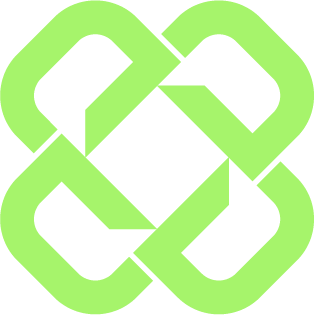Tech-savvy professionals often face unique challenges when grappling with addiction. Their reliance on technology can sometimes exacerbate negative thought patterns and behaviors. To better understand treatment options, many ask, How does cognitive behavioral therapy help with addiction? Cognitive Behavioral Therapy (CBT) offers a structured approach to address these issues. By understanding the interplay between thoughts, feelings, and actions, individuals can begin to reclaim control. With practical techniques and supportive environments, a path to recovery emerges—one that requires commitment and insight. What steps can they take to initiate this transformative journey?
Key Takeaways
- Recognize and challenge negative thought patterns that contribute to addiction to shift perceptions and behaviors effectively.
- Identify specific triggers that provoke cravings, enhancing awareness and proactive coping strategies.
- Set achievable goals for recovery, breaking down larger objectives into manageable tasks for sustained motivation.
- Practice mindfulness techniques to increase present-moment awareness and reduce anxiety related to addiction.
- Build a supportive environment by fostering open communication and connecting with empathetic individuals who encourage recovery.
Understanding Addiction in Tech-Savvy Professionals
While the fast-paced environment of the tech industry fosters innovation and creativity, it can also contribute to the risk of addiction among professionals in the field. The constant demand for productivity and performance can lead to unhealthy coping mechanisms, such as excessive screen time or substance use. Tech-savvy individuals may find themselves increasingly isolated, as their work often blurs the lines between personal and professional life. This isolation can exacerbate feelings of anxiety and depression, further entrenching addictive behaviors. Understanding the unique pressures faced by these professionals is essential. By acknowledging these challenges, individuals can begin to seek support and forge connections, fostering a sense of belonging that is vital for recovery. Such awareness is the first step toward healing and balance.
The Basics of Cognitive Behavioral Therapy (CBT)
Recognizing the unique challenges faced by tech-savvy professionals can pave the way for exploring effective therapeutic approaches, such as Cognitive Behavioral Therapy (CBT). CBT is a structured, goal-oriented form of therapy that focuses on identifying and changing negative thought patterns and behaviors. It empowers individuals by teaching them to recognize how their thoughts influence their feelings and actions. Through this process, clients learn coping strategies and problem-solving skills that can enhance their resilience. The supportive environment of CBT fosters a sense of belonging, encouraging individuals to share their experiences and struggles without judgment. By engaging actively in their recovery, tech-savvy professionals can harness CBT’s principles to create meaningful change, ultimately breaking free from addiction.
How Does Cognitive Behavioral Therapy Help With Addiction?
Cognitive Behavioral Therapy (CBT) serves as a powerful tool in the fight against addiction, as it addresses the underlying thought patterns that contribute to substance use. By helping individuals identify and challenge negative beliefs, CBT fosters a greater understanding of triggers and emotional responses associated with addiction. This therapeutic approach equips clients with practical strategies to cope with cravings and stressors, ultimately promoting healthier choices. Additionally, CBT emphasizes the importance of self-reflection and personal accountability, encouraging individuals to take ownership of their recovery journey. Through a supportive framework, CBT nurtures a sense of belonging and community, allowing individuals to connect with others facing similar challenges. In this way, CBT not only aids in breaking free from addiction but also fosters resilience and hope.

Practical CBT Techniques for Professionals
Building on the foundation of understanding how cognitive behavioral therapy helps with addiction, professionals can implement practical CBT techniques to enhance their recovery journey. These techniques foster self-awareness and promote healthier thinking patterns, creating a supportive path towards healing.
Some effective CBT techniques include:
- Identifying Triggers: Recognizing situations that provoke cravings.
- Challenging Negative Thoughts: Replacing harmful beliefs with constructive alternatives.
- Setting Achievable Goals: Establishing small, manageable objectives for progress.
- Practicing Mindfulness: Engaging in present-moment awareness to reduce anxiety.
- Keeping a Journal: Documenting thoughts and feelings to track patterns and progress.
Building a Supportive Environment for Recovery
While starting on the journey to recovery, creating a supportive environment can greatly enhance an individual’s ability to overcome addiction. A nurturing atmosphere, filled with understanding and encouragement, fosters resilience in the face of challenges. Surrounding oneself with empathetic friends, family, or support groups can provide the sense of belonging that is essential for healing. Encouraging open communication and shared experiences helps build trust, allowing individuals to express vulnerabilities without fear of judgment. Additionally, engaging in community activities or online forums can reinforce connections with like-minded individuals who share similar struggles. Ultimately, a supportive environment not only aids in recovery but also empowers individuals to embrace their journey, making it easier to apply cognitive behavioral therapy techniques effectively.
Frequently Asked Questions
Can CBT Be Done Online or Through Apps?
Cognitive behavioral therapy can indeed be conducted online or through apps, offering flexibility and accessibility. This approach allows individuals to engage with their healing process, fostering a sense of connection and support in their journey.
How Long Does CBT Treatment Typically Last?
Cognitive Behavioral Therapy (CBT) treatment typically lasts between 12 to 20 sessions, depending on individual needs. This structured approach provides support and guidance, fostering connection and understanding throughout the healing journey for those seeking recovery.
Are There Specific CBT Techniques for Gaming Addiction?
Addressing gaming addiction, specific CBT techniques include cognitive restructuring to challenge distorted beliefs about gaming, exposure therapy to reduce cravings, and developing coping strategies to enhance emotional regulation, fostering healthier relationships with technology and self.
What Should I Look for in a CBT Therapist?
When seeking a CBT therapist, one should prioritize qualifications, experience with addiction, and a supportive, empathetic demeanor. Building a trusting relationship is essential for effective therapy and fostering a sense of belonging in recovery.
Can CBT Help With Multiple Addictions at Once?
CBT can effectively address multiple addictions simultaneously by helping individuals identify and challenge harmful thought patterns. This approach fosters resilience and promotes healthier coping strategies, ultimately creating a supportive pathway towards recovery and personal growth.
Conclusion
To sum up, tech-savvy professionals can find empowerment through Cognitive Behavioral Therapy as they navigate their recovery from addiction. By embracing self-awareness, challenging negative thought patterns, and fostering supportive connections, they can cultivate resilience and lasting change. The journey may be complex, but with the right tools and a commitment to personal growth, they can break free from the grips of addiction and embrace a healthier, more fulfilling life. Hope and transformation are within reach for those who seek it.
You May Also Like To Read:
